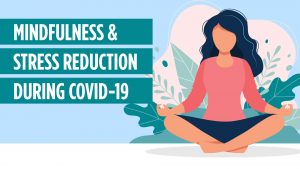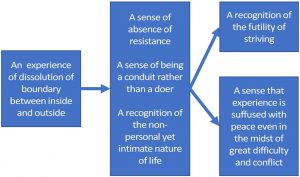Meditative Yoga is Superior to Power Yoga in Reducing Stress and Anxiety
By John M. de Castro, Ph.D.
“It may seem like yoga styles are all basically the same, but in reality more than a hundred different schools of yoga exist.” – Justin Young
Stress is an integral part of life. But if stress, is high or is prolonged it can be problematic. It can damage our physical and mental health and even reduce our longevity, leading to premature deaths. So, it is important that we develop methods to either reduce or control high or prolonged stress or reduce our responses to it. Mindfulness practices have been found routinely to reduce the psychological and physiological responses to stress.
Yoga practice has been shown to have a myriad of benefits for psychological and physical health, social, and spiritual well-being. It is both an exercise and a meditative practice that stresses both mental attention to present moment, movements, breath control, and relaxation. There has, however, not been much attention paid to which components of yoga practice that are important for reducing anxiety and the physiological responses to stress.
In today’s Research News article “A Comparison of the Acute Effects of Different Forms of Yoga on Physiological and Psychological Stress: A Pilot Study.” (See summary below or view the full text of the study at: https://www.ncbi.nlm.nih.gov/pmc/articles/PMC7503485/ ) Marshall and colleagues recruited physically inactive healthy adult women. They were provided with 2 30-minute yoga sessions separated by 48 hours of power yoga and meditative yoga in counterbalanced order. Power yoga emphasized physical postures while meditative yoga focused on mental focus, breathing, and relaxation. Before and after each yoga session the participants were measured for state anxiety and salivary cortisol levels.
They found that compared to baseline after meditative yoga there was a significant reduction in anxiety and salivary cortisol while after power yoga there were no significant changes in either measure. This suggests that meditative yoga improves mood and reduces stress while power yoga does not.
This study replicates prior research studies that have demonstrated that yoga practice reduces anxiety and stress levels as indicated by salivary cortisol levels. Yoga practice, however, contains a number of different components. The present study separates the exercise component, postures, from the meditative components, mental focus, breathing, and relaxation. The findings suggest that it is these meditative components and not the exercise components that are responsible for yoga’s ability to improve mood and reduce stress.
This study should be seen as a pilot study. It was small and of short duration. Yoga practice is not usually confined to only a single brief session but usually occurs as a number of sessions over a sustained period of time. It is possible that different results might occur after several sessions. It remains for future research to examine this.
So, meditative yoga is superior to power yoga in reducing stress and anxiety.
“Power yoga is a general term used to describe a vigorous, fitness-based approach to vinyasa-style yoga. Though many consider power yoga to be superficial “gym yoga,” this style of yoga practice was originally closely modeled on the Ashtanga method.” – Ann Pizer
CMCS – Center for Mindfulness and Contemplative Studies
This and other Contemplative Studies posts are also available on Google+ https://plus.google.com/106784388191201299496/posts and on Twitter @MindfulResearch
Study Summary
Marshall, M., McClanahan, M., McArthur Warren, S., Rogers, R., & Ballmann, C. (2020). A Comparison of the Acute Effects of Different Forms of Yoga on Physiological and Psychological Stress: A Pilot Study. International Journal of Environmental Research and Public Health, 17(17), 6090. https://doi.org/10.3390/ijerph17176090
Abstract
Yoga is a frequently recommended stress management strategy; however, the acute stress response to varying types of yoga are not fully clear. Thus, the purpose of this study was to compare the acute effects of meditative and power yoga on indices of physiological and psychological stress. In a crossover counterbalanced design, physically active females (n = 13; age = 20.8 yrs ± 0.8, height = 164.5 cm ± 6.1, body mass = 65.0 kg ± 13.8) who did not regularly participate in yoga or mindful training enrolled in this study. Participants completed two visits each, with a standardized instructional-video 30-min yoga session with either A) meditative (Hatha style) yoga or B) power (Vinyasa style) yoga. Prior to and immediately after each yoga bout, psychological stress was assessed using the State–Trait Anxiety Inventory (STAI) questionnaire, and salivary cortisol samples were obtained to measure indices of physiological stress. State anxiety scores were significantly lower following meditative yoga (p = 0.047) but were not different following power yoga (p = 0.625). Salivary cortisol levels were significantly lower following meditative yoga (p = 0.020) but not following power yoga (p = 0.242). Results indicate that acute engagement in meditative yoga decreases markers of psychological and physiological stress, while power yoga does not impart a significant stress-relieving benefit. Findings indicate that differing types of yoga may have various stress-relieving capabilities and should be considered by individuals seeking anxiolytic benefits.
https://www.ncbi.nlm.nih.gov/pmc/articles/PMC7503485/









